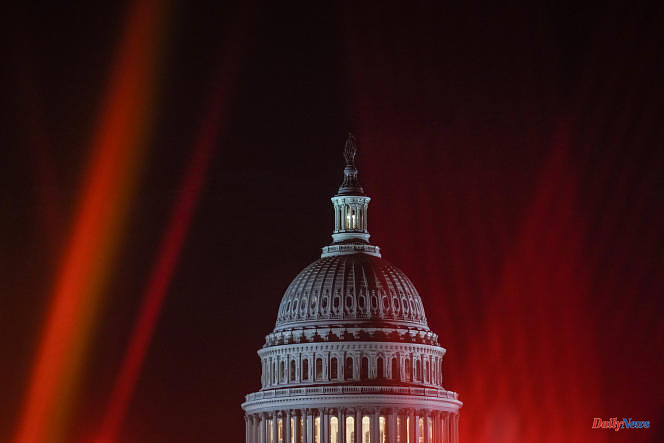The US Congress – that is, the addition of the Senate and the House of Representatives, or 535 elected – which has been sitting since January is the most diverse to have ever been elected. Overall, this assembly elected in November 2022 tends to look more and more like American society, although Christians, whites and heterosexuals are present in greater proportion than their actual weight in society. .
The 149 elected represent 27.9% of the members of Congress: 107 of them are Democrats (including one "independent") and 42 Republicans. This is a record in American political history, but it is still far from parity, and even from the proportion of French (36.6%), British (35%) and Swedish (49.3%) parliamentarians %).
This percentage, which is approaching 30%, election after election, is the result of an acceleration of the gender balance in American legislative institutions. The year 2020 had already set a record, with 144 elected out of 535.
In the House of Representatives, the Democrats are no longer far from parity: 91 elected out of 213, or 42.7%. It is more complicated among Republicans where they are 33 out of 222 (14.8%). In the Senate, the upper house, the road remains longer to go: 15 elected Democrats out of 51 (29.4%) and 9 Republicans out of 49 (18.3%).
Elected officials who serve in Congress have "become younger" since 2018. Back then, the median (50% younger, 50% older) was 61 years and 3 months, compared to 60 years and 4 weeks for elected Congress in 2022.
Nevertheless, this median age has steadily increased since 1982, the year of Ronald Reagan's first midterm elections; he was 51 years and 2 months at the time. This indicator follows the trend of the United States, whose population tends to age according to the Census Bureau, even if the median age of Americans in 2022 was 38.8 years, about twenty-two years younger than their elected officials .
This 118th Congress has made progress in terms of the representation of ethnic minorities: 133 seats out of 535 are occupied by non-white Americans, compared to 128 in the previous one. The overwhelming majority of them sit in the Democratic camp (83%), compared to 17% among Republicans.
Despite this progress, whites remain overrepresented: they are 75% of those elected to the Senate and the House of Representatives, while their weight in American society is 59%. This gap is as wide as it was in 1981, when 94% of Congress was white, against 80% in the general population, deciphers the Pew Research Center.
The representation of blacks (13% of Congress) and Amerindians and Alaskan First Nations (1%) is in line with their weight in society. In contrast, Asian Americans (4% in Congress vs. 6% in the population) and Hispanic Americans (11% vs. 19%) are underrepresented in both chambers.
It is in the House of Representatives that diversity is most advanced: 27% of elected officials are non-white, compared to only 12% in the Senate.
• Christian elected representatives overrepresented but in slight decline
In the United States, elected women and men define themselves by their religion, which makes it possible to detail the confessional composition of elected officials – which would be impossible in France. The differences with the 2020 Congress are slight, but the trends remain: modest decline of Christians (Protestants, Catholics, Orthodox, etc.) and rebalancing in favor of other religions. Nevertheless, Christians are still overrepresented: they make up 87% of Congress compared to 63% of the American population, according to the Pew Research Center.
Within them, it is the Protestants who are in the majority (56% in Congress against 40% of the United States), the Catholics fairly close to their proportion in society (27.7% against 21%) and the Jews a little overrepresented. (6.2% in Congress versus about 2% in American society).
Two elected officials, out of the 535, identify themselves outside the religious world. The first is California Democratic Rep. Jared Huffman, who ranks among humanists, those who "must improve society, live ethically, guided by reason, not the supernatural," writes the Washington Post. . The second is the Democratic (at the time of the election, since independent) senator from Arizona who declares herself "without religion", Kyrsten Sinema. She is also the first openly bisexual member of the US Senate.
With 13 elected officials presenting themselves as members of the LGBT community out of 535, this Congress is the best represented on issues of sexual orientation diversity. Their number has tripled in the past twenty years, recalls the Pew Research Center, and they constitute 2.4% of the membership of the two assemblies. However, this figure remains below the 7.1% of Americans who identify as gay, lesbian, bisexual or transgender, according to a 2021 Gallup poll.
At the same time as the November 2022 midterm elections, local elections were held in several states to choose a governor. On this occasion, Democrats Maura Healey (Massachusetts) and Tina Kotek (Oregon) were the first two openly lesbian women to be elected to head the executive of their respective states.












